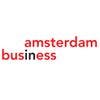
How Kite is changing cancer treatment
Making a difference for patients in Europe
CAR T-cell therapy is a relatively new and highly individualised way to treat patients with specific types of blood cancer for whom other treatments have failed. Approved by the European Medicine Agency (EMA) in 2018, Kite’s therapy works with a type of white blood cell (T-cell). Taken from a patients in hospitals all around Europe, these cells are transported to the Kite facility in Hoofddorp. Once they arrive, the cells are engineered and multiplied, before being sent back and administered to the same patient. These “reprogrammed” T-cells aim to recognise and attack the cancer cells.

Remarkable growth
Kite was established as a company in Santa Monica in 2009. In 2015 Kite bought T-Cell Factory in Amsterdam, a spin-off from NKI, to further contribute to the development of cell therapy. At that time, there were only 3 employees on the Dutch team. Kite was later purchased by the US-owned biopharmaceutical company Gilead Sciences, in 2017.
Having moved to a brand new 19,000m2 facility in Hoofddorp in March 2020, Kite has grown to over 900 highly skilled employees and contractors, and is still hiring. They can supply up to 4000 cell therapy treatments a year, which they expect to double in the foreseeable future. From its only production facility in Europe, Kite works in close collaboration with over 150 European hospitals to supply cell therapy to patients in 17 countries.
Looking at the future, there’s no sign of things slowing down. “This is only just the beginning,” says Van de Wiel, about the prospects of cell therapy. “We believe that this approach could become the basis for the treatment of many more types of cancer.”

Great logistics in a growing European hub
As this is a tailor-made treatment - with cells needing to be taken from a patient and infused back into the same individual, there’s no doubt that cell therapy comes with some unique logistical requirements. “Once the cells have been taken, we have around 70 hours to transport them to our manufacturing facility. Furthermore, they have to be kept within a constant 4°C-8°C range. After engineering on their way back, it’s even -150°C. With Amsterdam Schiphol Airport being a major European transport hub, our location next to it provides us with quick and convenient access to all of Europe, which is crucial to our operation. It just makes sense for us to be situated here, in this area.”
Additionally, Van de Wiel mentions the arrival of EMA as a key driver in the field of life sciences & health.

Access to top-level talent
“The city’s 4 hospitals are in close proximity and, if you include the centres of Utrecht and Leiden, there are several world-leading (academic) institutes within a 50 km radius of Amsterdam. This all adds up to a highly educated medical talent pool, with an international background. Our team in Hoofddorp currently consists of over 26 nationalities, and the diversity that this brings is extremely important. Different approaches in creative and analytical thinking, all contribute to creating an innovative and dynamic process; which is crucial, since cell therapy is truly a team sport. Diversity results in the best solutions.”
Van de Wiel has a good feeling about the future. “We are pioneers and I firmly believe we are in the position to really make a difference for patients and their families, and we’re proud to see this attracts highly motivated researchers and scientists who want to be part of this amazing journey.”
The Amsterdam Area sits at the heart of the European life sciences and health industry. The region thrives on cooperation, driven by the high concentration of its many research institutions, universities, medical centres, corporations and startups. Specialised hubs such as Amsterdam Science Park and the Amsterdam Life Sciences District offer countless opportunities for growth and collaboration, while the European Medicines Agency’s presence in the city ensures high quality innovation.
Related articles

Amsterdam Skills Centre teaches the surgeons of tomorrow

Cytek Biosciences fuels discoveries with cell analysis

Amsterdam Neuroscience: Uniting the capital to cure disease

Happitech is a startup with heart

Teijin: from fibres to first responders

Gilead Sciences: Working to end AIDS/HIV

Wacker Biotech is producing millions of vaccines in Amsterdam

Amsterdam UMC Imaging Center: the future of healthcare

Pacmed is using AI to help patients

